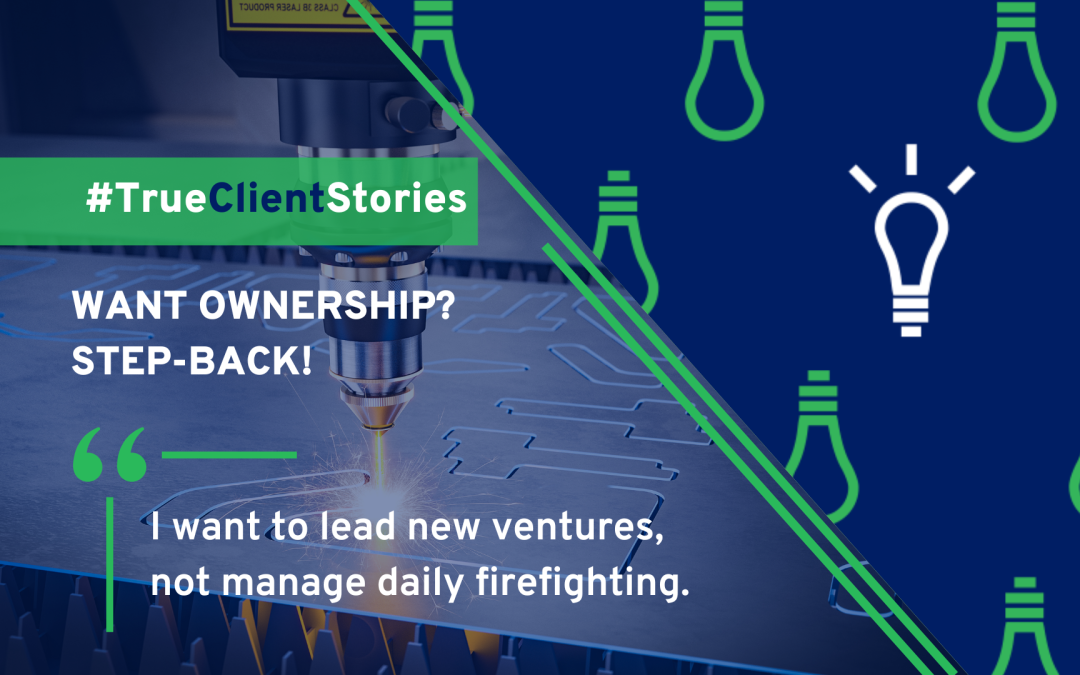Great leadership isn’t about doing more—it’s about empowering teams and making space to envision more. Explore how you can step back and drive the growth.

Stepping Back to Move Forward

A 25-year-old leader in the Indian manufacturing sector, had always operated like a close-knit family. The founder, who also served as CEO, prided himself on having nurtured many senior leaders from the ground up.
However, as the company grew, its largest unit—also the headquarters—became increasingly dependent on his involvement. Unlike the other six autonomous units, this unit was stuck in a cycle of top-down decisions, finger-pointing, and stagnated growth.
“I’m Stuck in Daily Operations”
During a leadership workshop inspired by Semco Style, the CEO voiced his frustration:
“I want to focus on new ventures, but I keep getting pulled into daily operations here. I need my team to take more ownership and collaborate better across departments. I want them to be self-reliant like the other units.”
It was a turning point.
Shifting the Mindset: From Managing to Guiding
The first breakthrough was internal: a mindset shift.
The CEO realized that by always offering solutions, he was unintentionally reinforcing dependency. To break the cycle, he chose to guide without taking over.
The initial steps included:
-
Setting clear KPIs like Value Addition (VA) targets and reducing “Order to Cash” cycle time
-
Analyzing root causes behind recurring issues
-
Identifying owners for key actions and decisions
-
Consciously stepping back from execution, while offering support and guidance
To build a sense of ownership, the company adopted a practice central to Semco’s philosophy: transparency. Financial metrics and performance data were shared openly with employees, followed by training to help them understand the numbers. By demystifying the business, the team began to see how their roles contributed to the company’s success.
Next, daily standups were restructured to emphasize accountability, shifting the focus from blame to problem-solving. Managers encouraged cross-skilling, which not only reduced dependency but also gave employees a broader perspective of operations. Monthly reviews evolved into collaborative sessions where everyone—from operators to department heads—shared successes and challenges.
One significant change was the introduction of a culture that valued experimentation. Instead of focusing on failures, teams were encouraged to learn from mistakes and continuously improve. As employees became more autonomous, managers found more time to focus on business development rather than daily firefighting.
Within just a year, the results spoke for themselves:
-
Efficiency improved
-
Customer complaints dropped
-
Productivity soared
-
Operators learned basic computer skills
-
CAD executives gained shop-floor experience
-
Decision-making became decentralized, reducing delays
With the unit now self-sufficient, the CEO finally stepped back from daily firefighting. Watching his largest team operate with confidence and clarity, he could now turn his focus to new ventures and innovation.
A transformation that started with letting go had unlocked a new era of ownership, trust, and sustainable growth.
To learn more about how we help organisations become self-managed, resilient and thus future-ready, click here.
Related Posts
Step back to Empower
Stepping Back to Move Forward
What happens when a leader stops solving problems for his team? The teams soared. Sense of ownership improved. Explore how a simple shift unlocked growth.
Navigating future of work – March 2025
Is Agile only for software teams? Nope. So how do non-software teams use it? They don’t—they adopt Agile principles to build true agility. Read on to learn how.








Recent Comments